Beijing Temple of Earth in the Works of Shi Tiesheng
Although the Beijing Temple of Earth is a well-known architectural site, I wasn’t familiar with it. I know the Temple of Earth because I read Shi Tiesheng’s article “I and the Temple of Earth”.
Shi Tiesheng was unfortunate—he was paralyzed at the age of 21 due to uremia. Yet Shi Tiesheng was also fortunate, because he refused to submit to fate and eventually became a great writer.
Shi Tiesheng once said, “I’ve been under every tree in Temple of Earth, and almost every meter of grass has my rut marks.” But Tiesheng, you must not have seen “the sea of Temple of Earth”. The sea of the Temple of Earth is a wall; sunlight sprinkles on the wall every afternoon, a sparkling look like the sea.
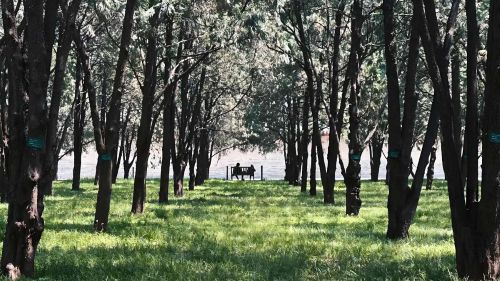
Location
No. 1, Anningmenwai Avenue, Dongcheng District, Beijing, China.
Opening Hours
06:00–20:30 daily. Note: The Fangze Altar (Inner Altar) may close earlier (before 17:00) during non-holiday periods.
Admission Fee (2025)
- General Park Entry: 2 CNY/person (access to the park grounds only).
- Fangze Altar Access: A combined ticket of 6 CNY/person (includes park entry + Inner Altar access).
- Note: Additional fees apply for special exhibitions or events.
How to Buy Tickets
- On-site: Tickets available at the ticket counter (cash, Alipay, WeChat).
- Online: Book via the official WeChat account “Beijing Temple of Earth” or the platform “Beijing Park Reservation”.
History of the Temple of Earth
The Temple of Earth in Beijing was originally constructed during the Jiajing period of the Ming Dynasty (1530 A.D.), initially named the Fangze Altar. It served as the primary site for emperors of the Ming and Qing dynasties to perform annual rituals honoring the Earth Deity. It is an important historical and cultural landmark. The second-largest of the five major imperial altars in Beijing (after the Temple of Heaven).
In 1530 (Ming Dynasty, Jiajing 9th year), the Fangze Altar was completed, marking the establishment of the Temple of Earth.
In 1534 (Jiajing’s 13th year), the complex was formally renamed Jidan, solidifying its status as the imperial earth-worship site.
In 1539 (Jiajing 14th year), the Outer Altar of the Temple of Earth was constructed, completing its dual-structure layout (Inner Altar + Outer Altar).
In 1730 (Qing Dynasty, Yongzheng 8th year), the Ji Gong, the imperial retreat for rituals) was rebuilt.
In 1750 (Qing Dynasty, Qianlong 15th year), Emperor Qianlong replaced the yellow-glazed brick surface of the Fangze Altar with qing stone, a type of blue-gray stone), symbolizing the earth’s solemnity.
In 1923, the Temple of Earth was first opened to the public as a park.
In 1965, the bell tower of the Temple of Earth was demolished.
In 1984, the Temple of Earth was designated as one of the third batches of municipal cultural relics protection units in Beijing.
In 2001, the Temple of Earth was upgraded to a national key cultural relics protection unit (part of the sixth batch announced in 2006). – 2001: Listed as a national key cultural relics protection unit (included in the sixth batch announced in 2006).
The centerpiece of Temple of Earth is the Fonze Altar and the Imperial Gion Room, and the road from the Fonze Altar to the Imperial Gion Room is filled with magnolia blossoms in March and April every year, making it particularly beautiful.
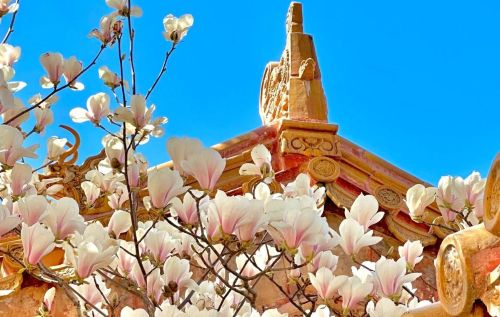
There are many ancient trees in the Temple of Earth, and the most representative one is the Ditan Ginkgo King Tree, planted in the Ming Dynasty, which is 500 years old. In autumn, the golden yellow ginkgo leaves cover the road, and the scenery is very charming. There are still 176 ancient trees in Temple of Earth, including cypress, acacia, jujube, elm, and ginkgo trees. Most of the ancient trees are over 300 years old.
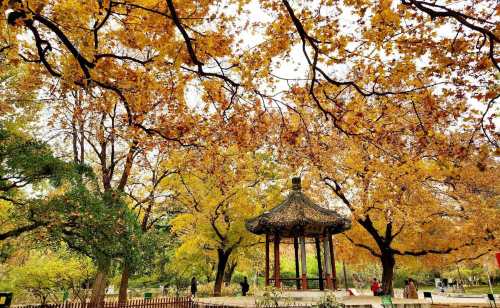
Temple of Earth Spring Festival Temple Fair
Every Spring Festival, the Beijing Temple of Earth hosts a grand temple fair with traditional food, folk performances, and cultural exhibitions. Over 100,000 visitors attend the festival day, and tickets cost 30 yuan per person (2025 price).
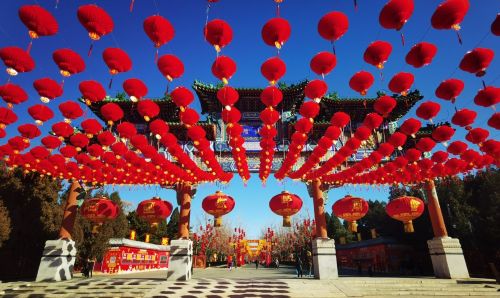
Temple of Earth Flower Festival
- Date: Every year from April 2nd to 13th
- Floral Displays: Peonies, magnolias, and begonias in full bloom across 10,000 plants.
- Cultural Performances: Daily folk music, dance, and storytelling highlighting China’s intangible heritage.
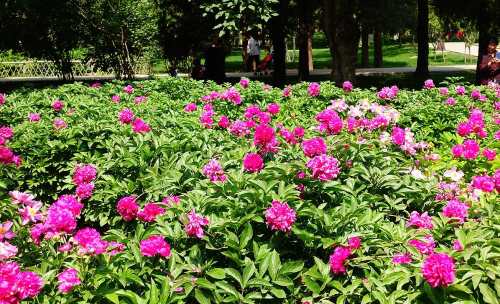
Bus Route
South Gate of Temple of Earth: Take the No. 13, 116, 44, 130, 684, 75, 18, 200, 142 buses in Beijing.
West Gate of Temple of Earth: Take the No. 104, 108, or 124 bus in Beijing.
North Gate of Temple of Earth: Take the No. 125 bus in Beijing.
East Gate of Temple of Earth: Take the No. 125 or 117 bus in Beijing.
Metro Line
South Gate of Temple of Earth: Take subway line 2 or 5 in Beijing and get off at Yonghegong Station.
West Gate of Temple of Earth: Take Metro Line 2 and get off at Andingmen Station.
Temple of Earth North Gate: Take Metro Line 5 and get off at Hepingli North Street Station.
Distance from Temple of Earth to nearby famous buildings
The Temple of Earth is 6.24 kilometers from Tiananmen Square.
Ditan is 24.43 kilometers from Beijing Capital International Airport.
Ditan is 8.47 kilometers from Beijing Railway Station.
Ditan is 12.70 kilometers from Beijing West Railway Station.
Ditan is 6.71 kilometers from Beijing North Railway Station.
11.93 kilometers from Beijing South Railway Station.
The Beijing Temple of Earth stands as a vital remnant of China’s ancient royal sacrificial traditions, seamlessly blending historical significance with modern leisure. Once the sacred site where emperors of the Ming and Qing dynasties worshiped the Earth Deity, it now serves as a tranquil public garden where contemporary citizens can stroll, relax, and connect with cultural heritage. Beijing warmly invites you to explore this unique fusion of history and nature.